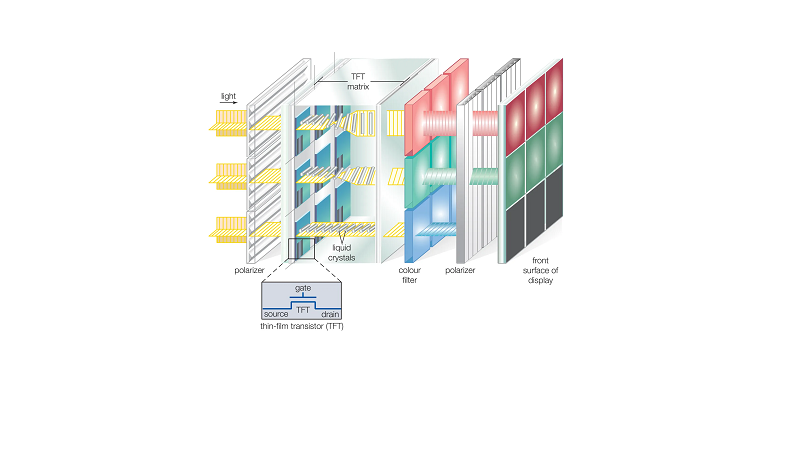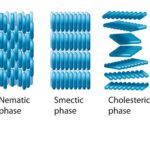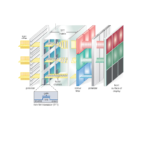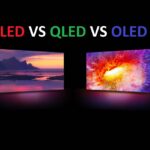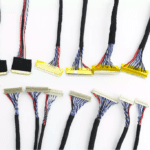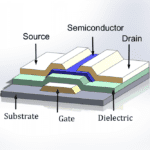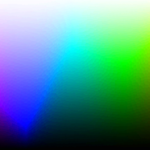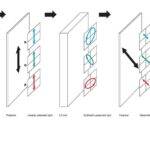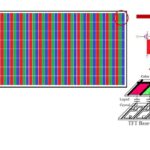What is Thin Film Transistor Display?
In terms of ITO or Flat panel LCD Technology for switching one component is most commonly used which is known as TFT ( thin-film transistor).
The display of complex images requires high-resolution dot-matrix displays consisting of many thousands of pixels. For example, the video graphics array (VGA) standard for computer monitors consists of an array of 640 by 480 picture elements, which for a color LCD translates to 921,600 individual pixels.
Excellent images can be built up from arrays of this complexity by using thin-film transistor (TFT) TN displays, in which each pixel has associated with it a silicon transistor that acts as an individual electronic switch.
The use of a transistor for each pixel makes the TFT an active-matrix display, as opposed to the passive-matrix display described in the previous section.
The TN effect produces black-and-white images, but, as shown in the diagram, color images can be generated by forming three-pixel groups using red, blue, and green filters. The displayed image is bright by virtue of a flat backlight placed behind the liquid crystal panel.
Introduced at the end of the 1980s, TFT displays are now widely used in portable computers and as space-saving flat-screen monitors for personal computers.
Some aspects of TFTs, such as viewing angle, speed, and the manufacturing cost of large-area displays, have slowed their full commercial exploitation. Nevertheless, these LCDs are increasingly entering the home television market.
Also visit below page :
